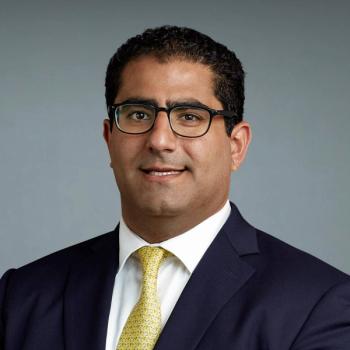
- Cancer Guide 2014
- Volume 0
- Issue 0
Before Treatment: Preparing for Long-Term & Late Effects
When deciding on treatment, patients should also consider the risk of future health problems
For most patients, the actual treatment for cancer will be short-lived. Generally, the longer the cancer experience—from the first suspicious symptom to the final treatment appointment—the longer the time needed to recover from the physical and emotional ripple effects.
The post-treatment picture can vary substantially, depending upon the type of cancer and treatment a person had and long-term prognosis. For example, some cancer types may require ongoing treatment or follow-up surgery, such as reconstructive procedures, leaving the patient cancer-free but not free of cancer’s effects.
Some patients have lingering physical and emotional effects that began during treatment and continue afterward. Called long-term effects, these may include pain, neuropathy, anxiety, sleep disturbances, cognitive dysfunction and fatigue. These long-term effects often resolve over time.
Others may have issues related to cancer or its treatment that emerge months or years after treatment has ended. These so-called "late effects" include such issues as secondary cancers, infertility and heart, bone or lung problems.
While both adult and pediatric cancer survivors experience late effects, more is known about survivors of pediatric cancer, since researchers have been gathering long-term survival data in pediatric cancers for more than 20 years. Research into late effects experienced by adult survivors is complicated by the fact that, as people age, they develop other medical problems, or comorbidities, making it more difficult to determine if the problems are related to prior cancer treatment, aging or an interaction between the two.
For example, one class of medications, known as anthracyclines, can cause damage to the heart. The damage, however, is dose-dependent, meaning the more of a drug a patient has, the more likely he or she will have a problem. Radiation presents another heart risk, since beams aimed at the chest to fight lymphoma, breast or other cancers also can reach the heart and lungs. Radiation can weaken or scar the heart muscle or damage valves in the heart. It also can accelerate coronary artery disease, creating rough spots in the lining of the arteries where fatty plaque can accumulate.
Secondary Cancers
If cancer returns, it is considered a recurrence of the primary cancer. When a survivor is diagnosed with a new primary, it may not be connected to treatment for the first diagnosis, or it may be a secondary cancer, one caused (or whose risk may have been increased) by treatment for the initial cancer.
A second cancer can occur for a variety of reasons, the majority not related to past cancer treatment. For example, it is well known that breast cancer survivors with BRCA mutations are at higher risk for ovarian cancer, and current or former smokers who have survived other cancers may have an increased risk of lung cancer.
Researchers know that many patients who received a secondary cancer diagnosis got high doses of radiation in certain areas or particular types of chemotherapy. For example, radiation is known to be a risk factor for breast cancer in women who received radiation in the chest area.
Researchers have also concluded that some late effects, such as secondary cancers, tend to occur within a specific time period. For example, leukemia and other blood cancers caused by some chemotherapy drugs tend to develop within several years after treatment. By contrast, the risk of a new solid tumor continues to increase even 10 years after therapy.
Articles in this issue
over 12 years ago
During Treatment: Getting Proper Nutritionover 12 years ago
During Treatment: Dealing With Side Effectsover 12 years ago
Before Treatment: Handling Insurance Mattersover 12 years ago
Before Treatment: Understanding Clinical Trialsover 12 years ago
Caregiving: Practicing Self-Careover 12 years ago
After Treatment: Developing a Survivorship Care Planover 12 years ago
During Treatment: Staying Activeover 12 years ago
Before Treatment: Seeking a Second Opinionover 12 years ago
Caregiving: Taking on a New Roleover 12 years ago
At Diagnosis: Balancing Cancer & Work




